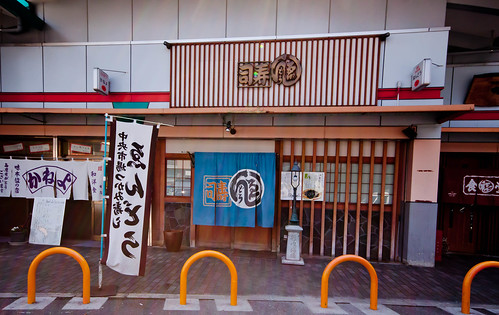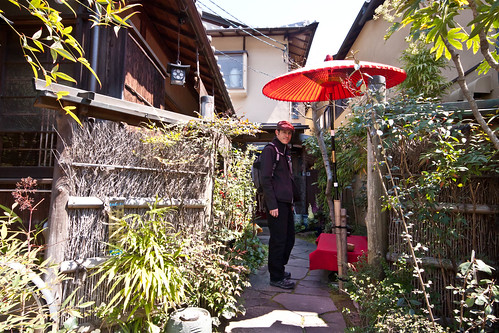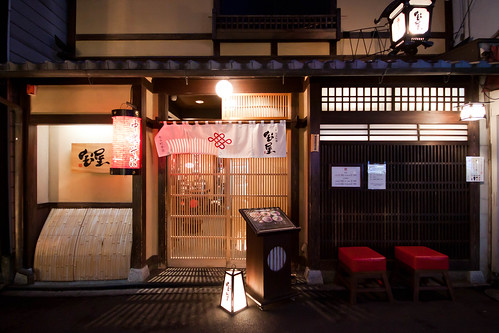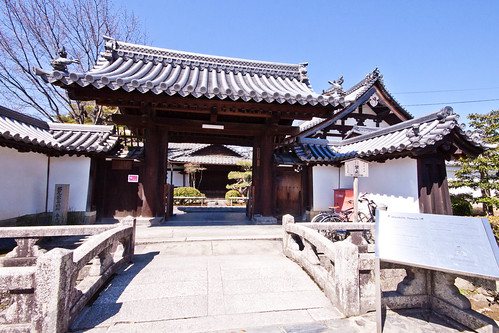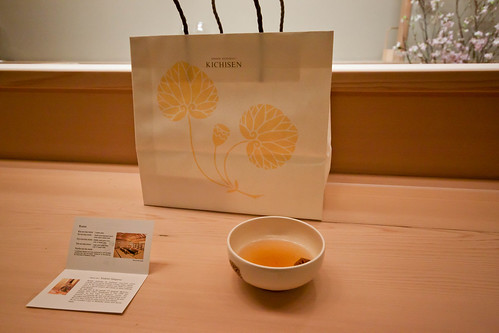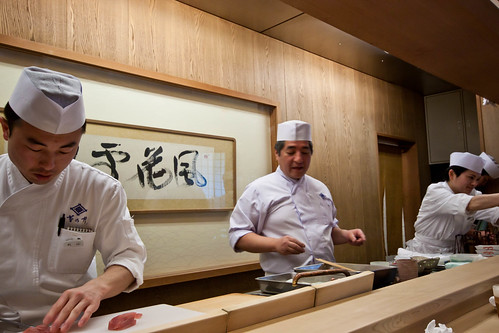
Chef Maruyama-san and Chef Yoshihiro Murata-san.
“For whatever reason, modern Japanese have maintained their deep emotional linkage with the annual shifts in climate, ingrained from ancient times whether cultivating crops or fishing on the coast. So much is this connection the heart and soul of a cuisine, that when I am asked, “What is kaiseki?” I often have a very simple answer.
“It is eating the seasons.”
— Yoshihiro Murata, Kikunoi
Roan Kikunoi, according to the 2011 Michelin Guide for Kyoto, Osaka and Kobe, was created by Chef Murata as a somewhat more affordable option for the younger set as compared to Kikunoi Honten, his flagship fine-dining restaurant that’s garnered 3 Michelin stars. His other outpost in Akasaka, Tokyo, won 2 stars and admittedly Roan Kikunoi has 2 stars for itself. Though quite a high bar, lunch here is also possibly one of the best deals for sampling kaiseki in Kyoto. Chef Yoshimi Murata has been something of an international celebrity, recently receiving accolades from Noma’s Rene Redzepi (best meal), providing consulting advice to Singapore Airlines for in-flight meals and releasing a gorgeous English cookbook that garnered him a James Beard nomination. He also appears to somewhat controversial in Kyoto, as evidenced by this discussion string on Chowhound. Continue reading →
